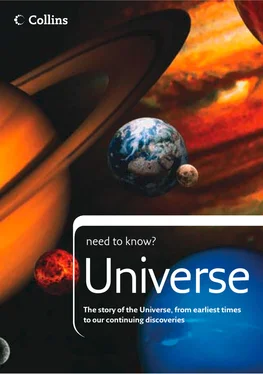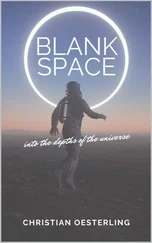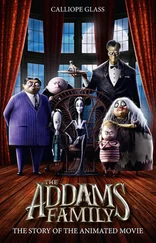Only a century ago most astronomers thought that the Milky Way represented the entire Universe. We now know that the Milky Way is just one of billions of other galaxies – some larger, some smaller than our own. The nearest big galaxy to the Milky Way is the Andromeda Galaxy, 2.9 million light years away, a spiral similar to our own. Discernable with the unaided eye on a dark, clear night, the light from that ghostly oval smudge in Andromeda set off long before the first sparks of consciousness flickered within the minds of human beings.
Telescopic surveys have shown us the structure of the wider Universe. Galaxies are arranged in gravitationally-bound clusters and superclusters, immersed in vast clouds of gas. Incredibly, the matter that can be observed telescopically – planets, stars, interstellar gas and dust clouds – make up a small proportion of the matter in the Universe. A staggering 90 per cent is thought to take the form of ‘dark matter’, currently unable to be detected by any telescope. This mysterious stuff is known to exist because its mass produces a detectable gravitational pull on galaxies. What constitutes dark matter is a subject of much debate among astronomers. It may be an entirely new form of matter, quite unlike the stuff we are made of, or it may simply be as yet unobserved ordinary matter such as old failed stars known as ‘brown dwarfs’, or more exotic entities like black holes.
Zooming around the Universe
To get some sense of the size and scale of the cosmos, let’s zoom away from the Earth in giant steps, right out to the very edge of the Universe, pausing to survey the scene before our eyes after each step.
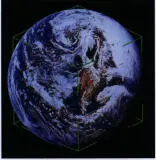
Our home planet, a sphere more than 12,700km across.
The little grey Moon is outshone by its big blue partner.
Most of the Earth is contained within a 10,000km cube – just 1/30th light second across. From here we can see the blue oceans, the brilliant white clouds and icy polar caps, and the browns and greens of the continents. You may see some large sprawling grey cities during the day, but at night you’ll have no trouble seeing city lights and illuminated roadways. From our high vantage point, the Earth’s atmosphere – our protection against cosmic threats, such as bombardment by meteorites and harmful ultraviolet radiation from the Sun – appears awfully thin and insubstantial.
Virtually a double planet, the Earth-Moon system is contained within a cube 1,000,000km across. Light would take just 3 seconds to get from one side to the other. This view shows the comparative size and brightness of the Earth and the dull grey Moon. The Moon has no atmosphere; no clouds ever appear in the Moon’s skies, rainfall never quenches the dry lunar soil and no rivers flow on its surface. Our only natural satellite has always been dry and lifeless, its surface subject to harsh treatment from cosmic impactors.
Contained within a cube of space 10 billion km on each side (8 light hours across) are the orbits of the nine major planets of the Solar System.
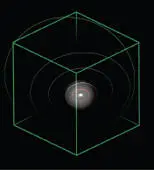
The planets are utterly outshone by the brilliant Sun.
Viewing a cube of space 1 trillion km (38 light days) on each side, all the major planets in the Solar System are lost in the glare of the Sun, which appears as bright as the full Moon. The inner parts of the distant Oort Cloud of comets are contained within the cube.
At the edge of the Sun’s gravitational domain.
A cube measuring 100 x 100 x 100 light years centred on the Sun takes in a sizeable portion of the local stellar neighbourhood, including many of the sky’s brightest stars, from Rigil Kent (4.4 light years away) out to Capella (42 light years away).
Rigil Kent, otherwise known as Alpha Centauri, is the brightest star in the constellation of Centaurus. It is like the Sun in terms of age, size, colour and luminosity, but because it is so near to us it appears as the sky’s fourth brightest star. Alpha Centauri is gravitationally bound to two other stars – a smaller orange star called Alpha Centauri B and a diminutive red dwarf known as Proxima Centauri. Of the three, Proxima is slightly the nearer; at 4.22 light years, it is the nearest star to the Sun. Could planets exist in orbit around Alpha Centauri? Since Alpha Centauri B orbits its brighter neighbour at a distance equivalent to the Sun and Uranus, Alpha Centauri wouldn’t be able to hold on to any planets further away from it as Jupiter is to the Sun, as their orbits would be gravitationally disrupted by Alpha Centauri B.
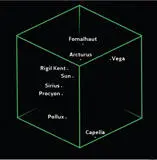
The Sun, just an ordinary star among its stellar neighbours.
The spiral structure of our galaxy can only be appreciated when viewed from above its plane.
Our home galaxy, the vast spiral of the Milky Way, is enclosed within a cube 100,000 light years across. From this distance we can see only the brightest stars within the galaxy – stars of the Sun’s brightness and dimmer are assumed within a mottled glow, interspersed with the dark silhouettes of opaque dust lanes and glowing clouds of dust and gas.
Our local group of galaxies.
A cube 10,000,000 light years across will take in the Local Group of galaxies. Only three large spirals dominate the scene – the Milky Way, the Andromeda Galaxy and its neighbour the Triangulum Galaxy. The smaller galaxies dotted around are dwarf and irregular ones. Numerous gravitational interactions between the galaxies of our local group have taken place during the last 12 or more billion years.
From our impossible perspective, viewing a cube of space 10 billion light years to each side, most of the objects in the visible Universe can be seen. Each dot represents a cluster of galaxies.
As we look further out into space, we are looking backwards in time. Light from the nearest galaxies in our local group takes a few hundred thousand to several million years to reach us, and we are seeing them as they appeared before homo sapiens sapiens walked the Earth. Galactic clusters and superclusters are arranged in filaments and sheets surrounding huge empty voids. Astronomers work out the distance of far away galaxies by measuring how much light is shifted towards the red end of the spectrum or redshifted. The greater the observed redshift, the greater a galaxy’s distance. Telescopic deep field images have revealed faint galaxies so distant that we see them as they appeared several billion years ago – before life itself developed on Earth.

Our picture of the wider Universe is based on redshift measurements.
Want to know more?
Take it to the next level . . .
Читать дальше
